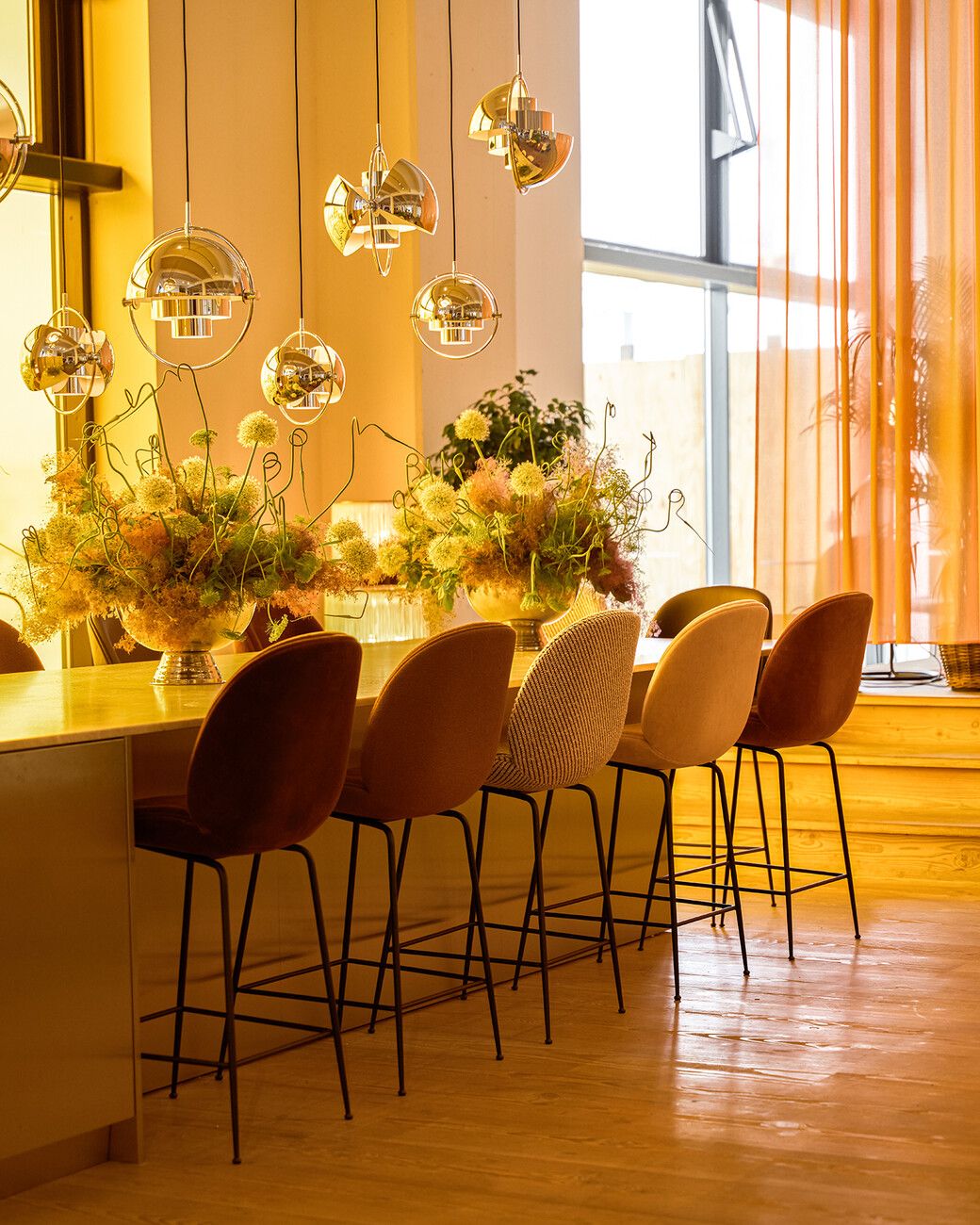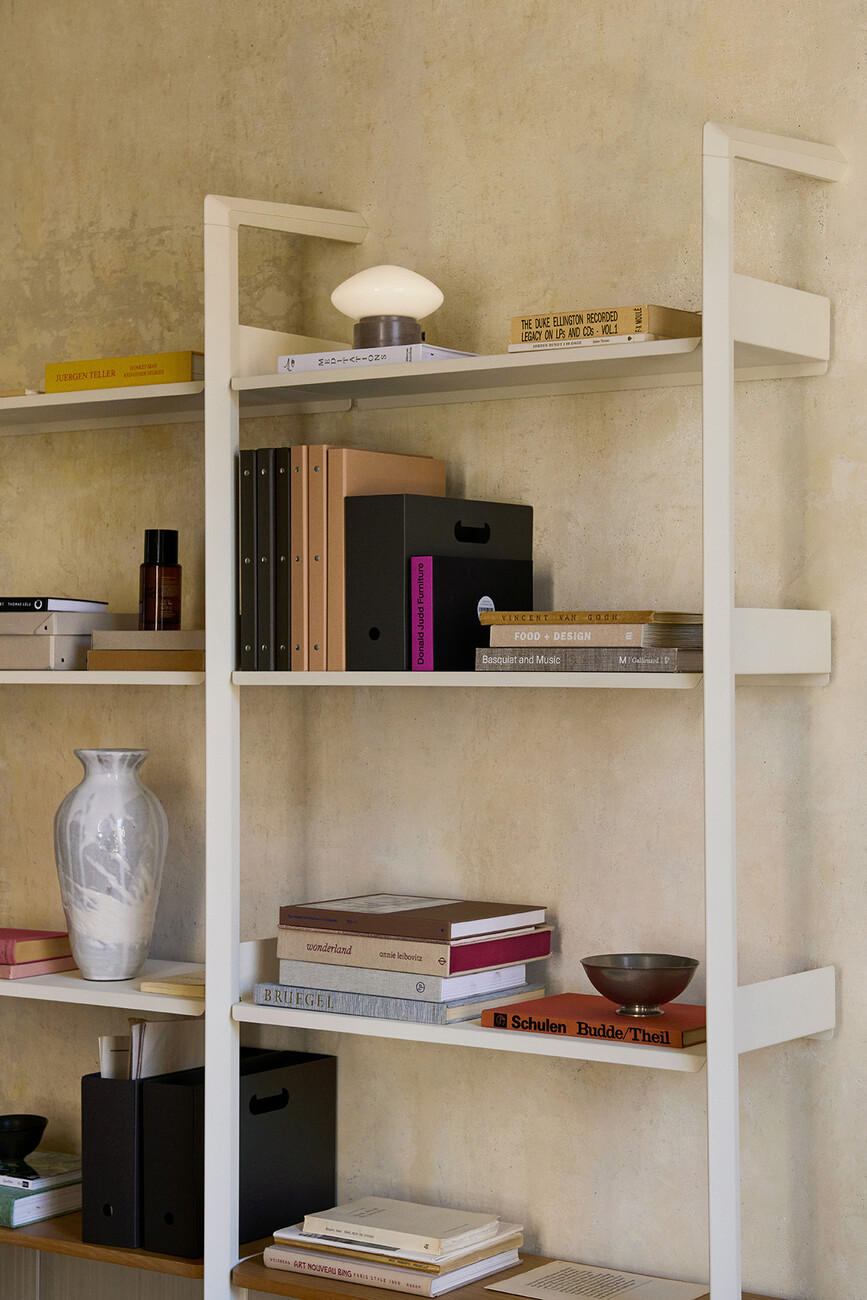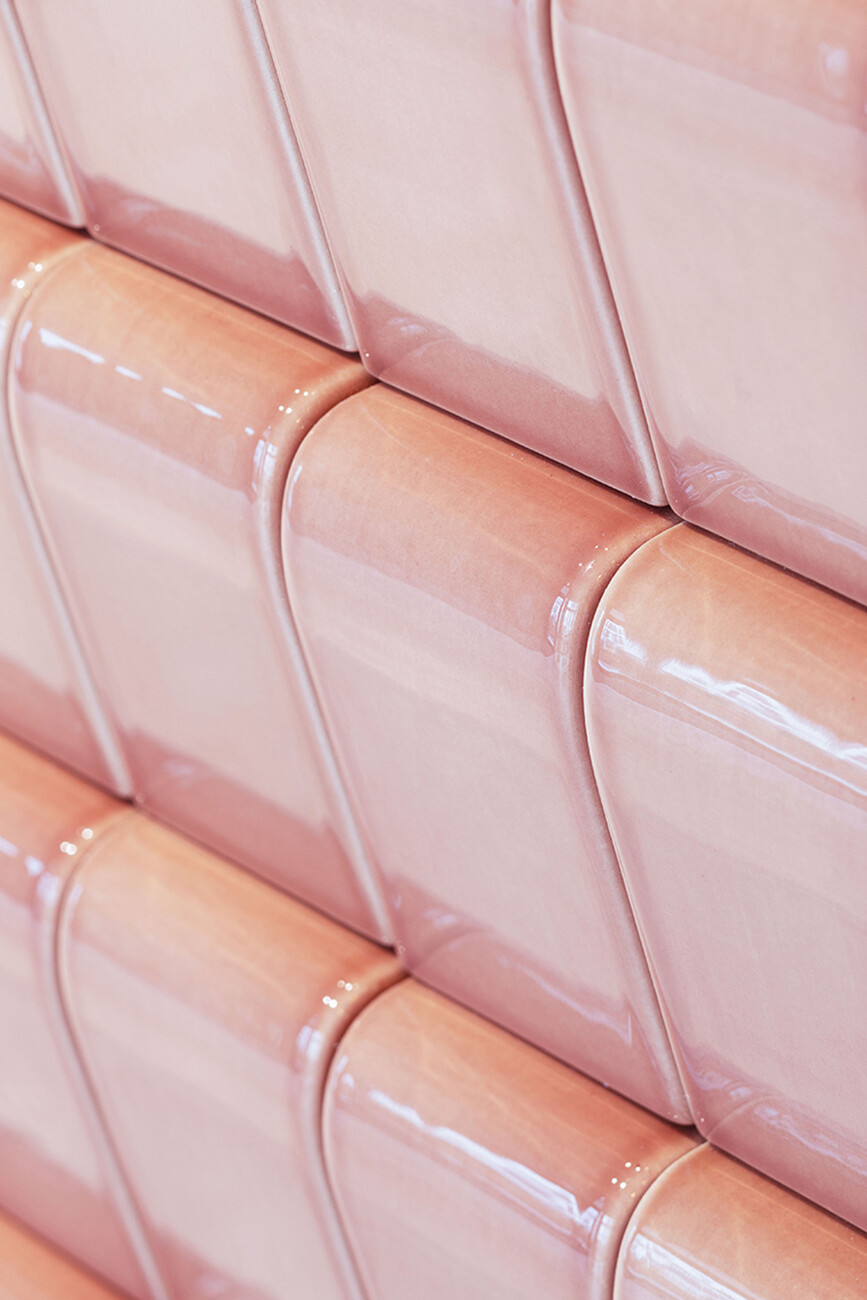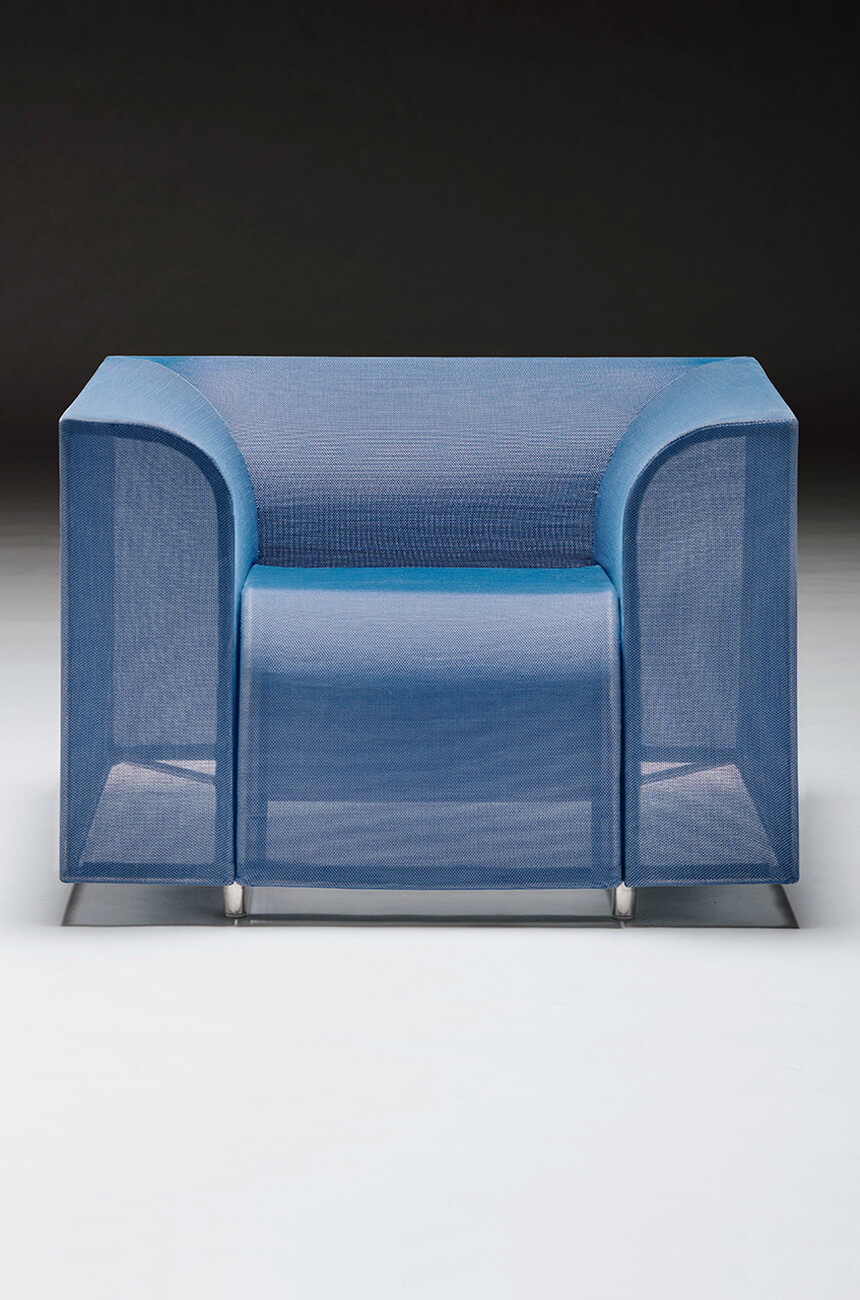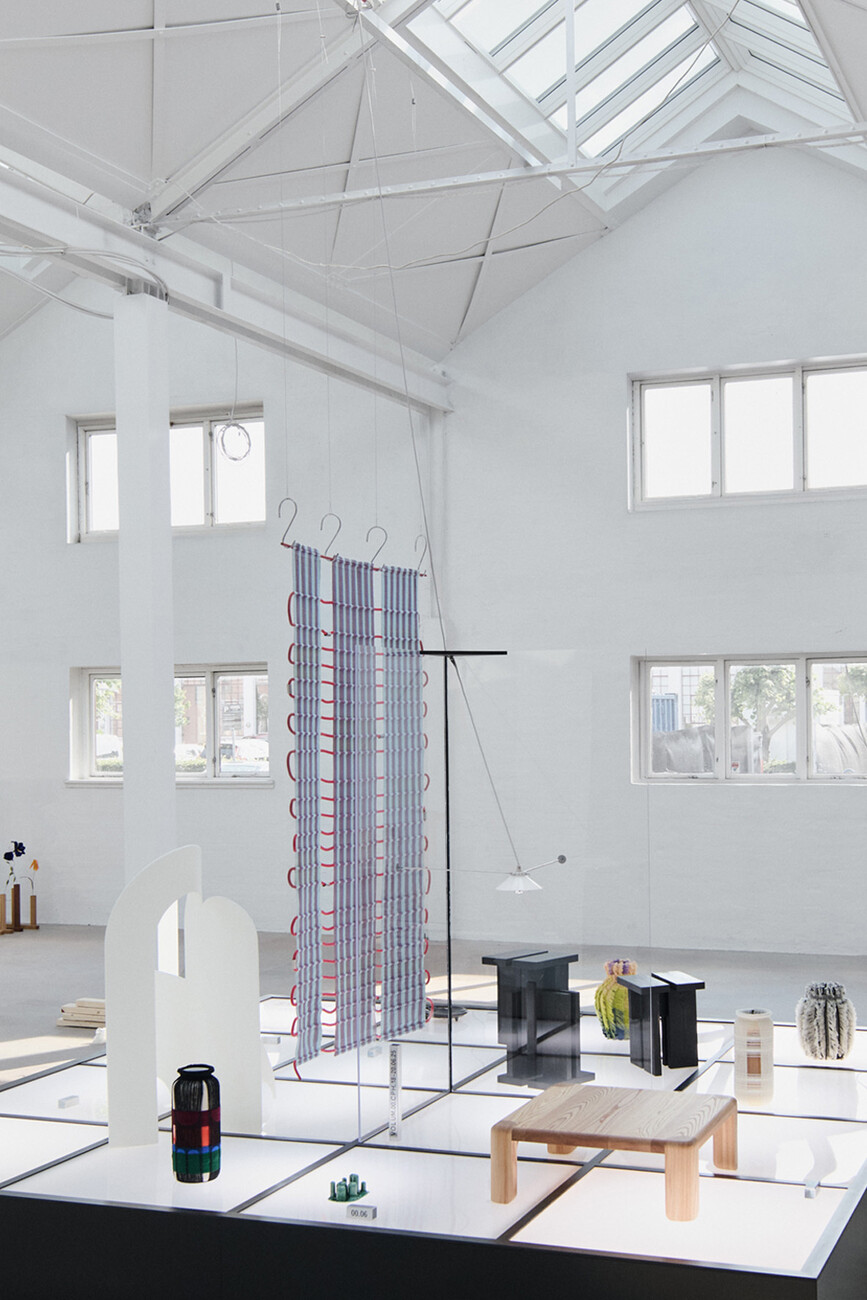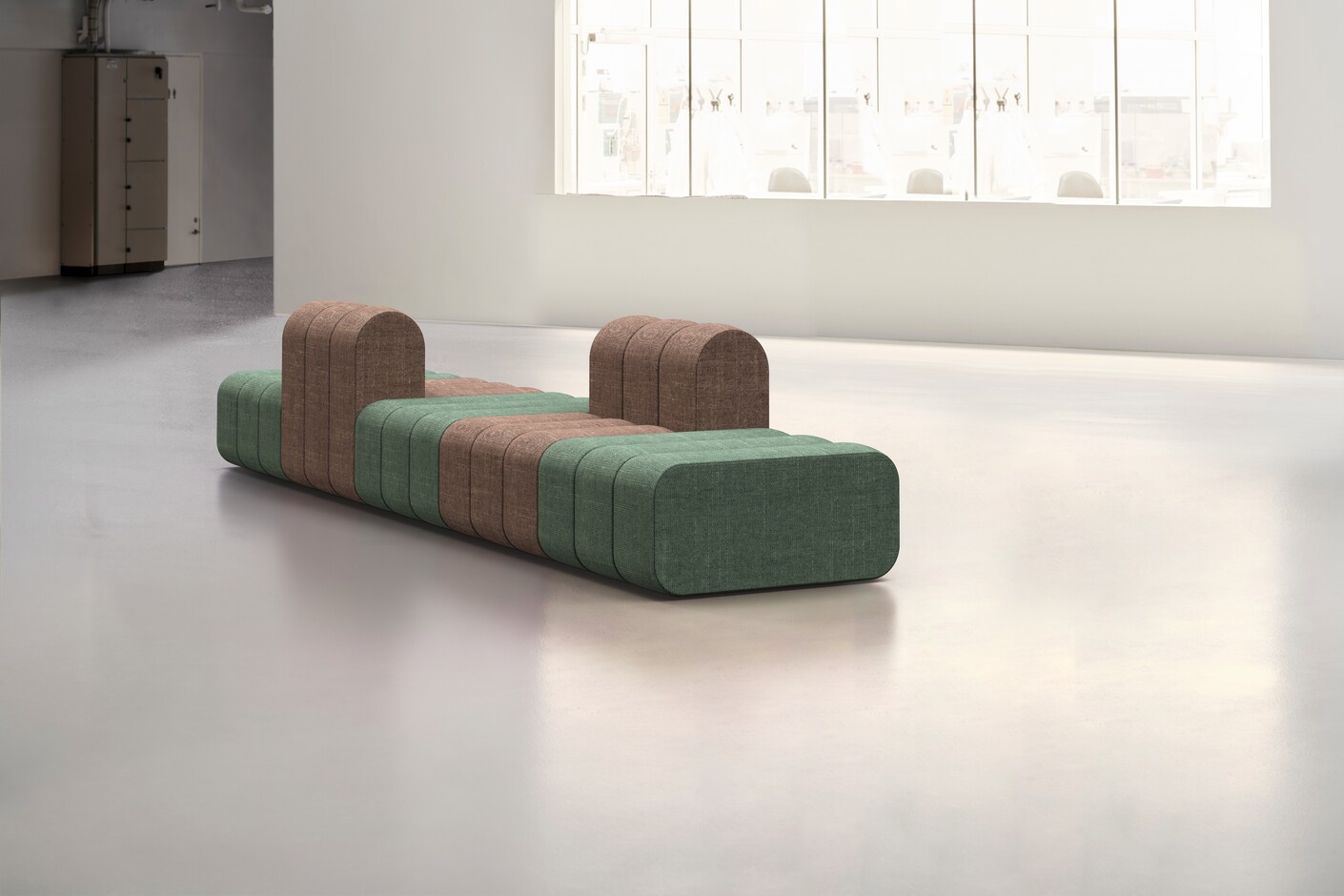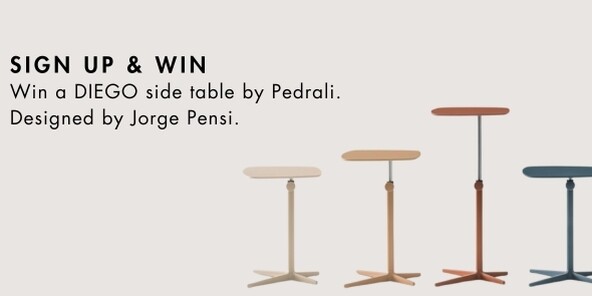3daysofdesign 2025 – Review
Fight the Fake
Visibility and authenticity were two key aspects of the event, which the 3daysofdesign team translated into a new structure this year: eight new design districts were explored and each assigned a theme, such as ‘community’ for Nordhavn. The district is currently being developed piece by piece from an industrial port area into a model for the ‘five-minute city’, where everything is within walking distance and neighbourhoods are connected. "Copenhagen symbolises the multi-layered meaning behind this year's motto, “Keep it real”. It is a sustainable and open-minded metropolis that celebrates diversity. Our festival embodies our ethos of providing a visible platform for people with different perspectives. And all this against the backdrop of Copenhagen's rich cultural heritage, its reputation for innovation and its legacy of design," says Signe Byrdal Terenziani, CEO & co-founder of 3daysofdesign.
The 3daysofdesign 2025 offered 470 exhibitions, and the strong reference by established manufacturers to their successes in the 20th century, as well as a general retro-analogue longing, especially for the shapes and colours of the 1960s and 1970s, continued to be clearly evident. The pressure to introduce a new product every year has visibly receded from the exhibitions in light of global challenges. House of Finn Juhl crowned the movement by borrowing furniture from the collections of the past decades directly from their owners to demonstrate the longevity of the designs. Fortunately, however, contemporary developments in existing designs are no longer limited to new colour schemes – celebrating tradition now serves more as inspiration for a new direction, as a tribute that combines classic ranges with modern technology and a vision of the future. Michael Anastassiades created an elegant table and chair in solid wood for Fritz Hansen with the ‘After’ series, Fredericia presented, among other things, a new edition of the ‘MK Bookcase System’ by Mogens Koch, the ‘Bench for Two’ by Nanna Ditzel and the ‘Plan Wood Series’ made of FSC-certified oak by Barber Osgerby, a further development of the ‘Plan’ collection. Carl Hansen & Søn also honours Danish textile, jewellery and furniture designer Nanna Ditzel by reissuing the ‘Vita’ sofa and ‘ND55’ coffee table, which she designed with Jørgen Ditzel in the 1950s. The ‘CH621’ swivel chair from 1948, designed by Hans J. Wegner in brushed steel, oak and fabric details such as leather, has also been gently optimised and is back on the market.
In cooperation with PaperShell and designers Hee Welling and Gudmundur Ludvik, Fredericia also presented the ‘Pato Paper Chair’: the innovative material had previously made its debut in the furniture industry with the ‘Catifa Carta’ chair by Arper. The shell of the ‘Pato Paper Chair’ consists of 32 layers of FSC-certified kraft paper, which is bonded with a natural organic binder and shaped under heat and pressure. The result is a lightweight yet robust structure with a surface that can range from deep black to warm reddish brown.
Montana has relaunched Erik Rasmussen's modular sofa ‘Paradigm’ and equipped it with interchangeable covers. Hay surprised visitors with the reissue of the Amanta sofa by Mario Bellini, whose shell is now made of recycled ABS plastic instead of fibreglass and offers a new range of options. &Tradition presented the Hi Lo Lounge by Anderssen & Voll, whose recessed surface resembles a 1970s couch landscape. Verpan, in collaboration with Verner Panton Design AG, is bringing the ‘Series 270 F Armchair’ made of curved plywood into the present. Formfin is once again producing Ingmar Relling's ‘Nordic Chair’ from 1954, which was designed as a comfortable seat for small rooms and is available in both oak and walnut. Among other things, Gubi offered a reissue of the ‘Poltrona Tria’ lounge chair, originally designed by architect and designer Carlo De Carli, who explored the limits of rattan as a material with its elegantly curved form. Gubi also offered new perspectives on textiles: “Reales Pattern” made of cotton, designed in collaboration with architect Michele De Lucchi and his Milan studio AMDL Circle for the “Bistra” collection. The pattern is characterized by a rhythmic interplay of hand-drawn black lines that form a dynamic yet harmonious motif.
Kaufmann Keramik showcased Sebastian Herkner's wave-shaped wall ceramic ‘Acqua’, which is handmade in Bavaria and offers many installation and design options. At Anker & Co, visitors could discover the ‘Halo Edition,’ a family of lights inspired by celestial phenomena and the cosmos, handmade by the product and architecture studio Mandalaki. The lights offer an optical system that enables an impressive projection of colours and shades.A-N-D presented its building products in a mix of café, bar and spacious showroom in cooperation with Boon Editions, J Hill's and La Marzocco. Fucina Frammenti conveyed the message of the Noble Waste theme – recycled fragments of Murano glass and marble – with the installation ‘Appartamento’ and the new ‘Pièra’ collection by Matteo Fogale, which have been transformed into lights thanks to circular thinking and environmentally friendly processes.
The designer duo Muller Van Severen created a series of new objects for valerie_objects, such as the ‘Alu stool’ with a lacquered seat, which was developed in collaboration with Bjarke Ingels Group (BIG) for the lounge bar at their headquarters. Also on display was an outdoor version of the rocking chair with a minimalist steel frame and a linen or leather seat. Out-sider and Vestre conquered the outdoor space with modular elements made from recycled and recyclable materials, which, with seating and plant pots, make urban spaces more versatile. Tribù also made its debut at 3daysofdesign with new additions to the ‘Elio’ and ‘Dunes’ collections by Yabu Pushelberg. String added to its metal range with the new ‘Pira G2’ magazine rack in walnut and oak by Anna von Schewen and Björn Dahlström, which can be freestanding or wall-mounted. The original design was developed by Olle Pira in 1954.
In his exhibition ‘From Here Now’ in the historic former headquarters of the East Asiatic Company, British designer Lee Broom looked back on his lighting creations to date and also presented the portable table lamp ‘Chant’ made of aluminium and opal glass, which was inspired by glass building blocks from the 1970s. The exhibition in Copenhagen is Broom's first participation in 3daysofdesign, where he also emphasised how atmospheric and sustainable set design can be with the presentation of the lamps in their wooden transport boxes and the aesthetic draping of dust covers. Man of Parts showcased its current collaborations with international designers in the historic rooms of Harsdorffs Hus, including the ‘Frenchman Street’ chairs and ‘Via Bernina’ tables by Sebastian Herkner. At the same time, the collaboration with Kieffer Textiles was presented, which was created under the creative direction of Formafantasma and manufactured in the Rubelli factory. Kvadrat Acoustics opened the doors of its design workshop in Nordhavn during the 3daysofdesign, offering workshops and revealing the creative process behind the ‘Waves’ acoustic solution, a modular system with perfectly wave-shaped folds.
Danish design brand Formarkivet used 3daysofdesign for its debut, presenting contemporary designs such as the imposing Ion Armchair and the slim Ferra Chair by Tim Torp Hansen, as well as the "Cubio" collection with its voluminous shape and round columns made of raw aluminium. &tradition showcased its first collaboration with the design studio Industrial Facility, among other things. The result is precise and surprising on many levels: the ‘Rombe’ shelving system in wood or metal is reduced to its essence and yet can carry heavy loads when needed. It does not obscure the wall and is available in wood or metal. An additional highlight: the hex key required for assembly is concealed in a compartment at the top of the shelf. In addition, &Tradition has furnished the new boutique hotel ‘Petra’ in the central district of Frederiksstaden, which was originally designed by Kay Fisker. The modular ‘WIMM Podium’ shelf by Erwan Bouroullec for raawii, made of aluminium profiles and steel elements, is also light and flexible. The panels are available in various finishes, from wood veneer to linoleum and melamine. Boris Berlin Design has explored the boundaries of sustainable armchair design with textile supplier Krall+Roth for +Halle and created the “Shrinx Lounge Chair” with the simplest possible structure: The fabric is draped around an ingenious steel frame and there is no need for foam. The model is made of lacquered steel, polished stainless steel, polyester and polyamide.
The aim of the shows was to maintain a balance between spectacle and craftsmanship, between lovingly crafted details and a grand entrance. Louis Poulsen presented the ‘PH Aged Brass Collection’, an homage to Poul Henningsen's design from the 1920s and 1930s, a walk-in installation by Danish fashion designer and artist Henrik Vibskov in cherry red, inspired by Verner Panton's iconic ‘Panthella’ lamp, which served as both a dynamic sculpture and an exhibition space. Møbel Copenhagen made the heart of every Instagram fan beat faster: creative director Anders Sølvsten Thomsen created six rooms on the ground floor of the Ofelia Plads Parking Garage, each dedicated to a single colour – even the scent matched the design.
Parallel to the individual shows, many companies opted for a collective approach this year and exhibited their products in a group presentation, usually accompanied by an extensive supporting programme. Fjordfiesta impressed as a participant in the ‘Inside Norway’ show with its delicately crafted furniture made from Norwegian pine: The ‘Norrköping 01’ stool and the ‘Norrköping 02’ table, originally designed by architect Sverre Fehn for the Norrköping Villa in Sweden. This was part of a housing exhibition that focused on the Scandinavian home of the future. The villa was designed in the shape of a Greek cross, with the kitchen and bathrooms located in the centre of the building. This centralised structure is reflected in the construction and details of the Norrköping furniture.
In addition to the annual presentations ‘Framing’ and ‘Frederiksgade 1’, visitors could discover ‘Design / Dialogue’, which showcased new design perspectives in the fields of crafts, object design, interior design and decorative arts for the second time, putting young and established companies on an equal footing. The show, curated by Ark Journal in collaboration with stylist Pernille Vest, also included E15, which presented, among other things, the ‘Alde’ seating collection by David Thulstrup alongside the ‘Kaname’ table family by Philipp Mainzer and selected textile designs by Anni Albers. The ‘Kerman’ sofa by Farah Ebrahimi and Philipp Mainzer was presented with new, angled modules that allow for dynamic constellations. The work of Annie Albers was also a theme at Dedar Weaving, which, following its debut at Milan Design Week, presented its collaboration with the Josef and Anni Albers Foundation in Copenhagen, bringing the legendary artist's textile works into a new era: five fabrics were reproduced and reinterpreted using contemporary techniques. In addition, Avolt and the Bauhaus Archive presented their new collaboration.
"Material Matters", a platform founded in 2019 that explores the importance of material intelligence in architecture and design, took its first step outside London at 3daysofdesign, showcasing a curated selection of exhibitors in the historic Gammel Dok building in Christianshavn. Each of the exhibits was intended to present its own material history, highlighting the importance of material intelligence for shaping the future. The tone was set by the shows of the American Hardwood Export Council (AHEC) (exhibition ‘No.1 Common’ by Daniel Schofield, Anna Maria Øfstedal Eng and Andu Masebo), which, named after the quality class of the same name for wood, deals with the question of what quality means in the context of natural resources. Hydro brought the exhibition ‘R100’ from Milan to Copenhagen. It included works by Sabine Marcelis, Keiji Takeuchi, Cecilie Manz, Daniel Rybakken and Stefan Diez, all of which were created within a self-imposed radius of 100 kilometres under the artistic direction of Lars Beller Fjetland. The entire show consists of 100 percent used aluminium, including the objects, pedestals and displays. An insight into the experiment with 3D printing was provided in the same building, 91—92, in the form of the ‘Pavilion’ and ‘Pascal’ lighting collections, which have a surprisingly soft, haptic texture. The luminaires are designed for flat-pack shipping and easy self-assembly. To extend the service life of existing products, ‘Pascal’ also fits onto a used lamp base.
The ground floor of the Conary townhouse became the stage for ‘Gestures of Home’ by Openhouse Studio, curated by Henriette Schou, who transformed it into a cosy setting with furniture and accessories from Expormim, Saba Italia and Armadillo. other circle provided a platform for exploring and presenting post-disciplinary creative culture, linking design, art, music, food and fashion. Exhibitors included the designers from NM3 and Sucuk und Bratwurst, Adorno International Design Collaboration, Andreas Murkudis, House of Bolon, Snøhetta and cc-tapis. Karimoku Case teamed up with Linie Design for an exhibition curated by Norm Architects and Pernille Vest. Blå Station shared a space with Glimakra and Horreds, showcasing Bernstrand and Borselius's linear ‘Villhem’ armchair and ‘BOB Long,’ the designers' extension of their flexible seating programme.
Under the title ‘Optical Flow: Objects and Perception in Light,’ the Fanzi gallery and platform exhibited works that function both as functional everyday objects and as works of art, including sculptural lamps, a modular shelving system made of uncoated steel, a side table made of synthetic resin, and a sculpture that serves as a holder for a yoga mat. This year, it offered young Taiwanese designers Marie-Louise Høstbo, Shun-Hsiung Hung, Yen-An Chen, Ting-Hsuan Chang, Coby Huang and Chialing Chang the opportunity to showcase their work.
The exhibition ‘Shifting Objects – Shifting Values’ by Jonathan Radetz focused on the connections between the various participants: between Germany and Denmark, craftsmanship and design, objects and photography. Projects by eight designers (Studio œ, Studio Sarmīte, Marie Luise Stein, Haus Otto, Tanja Kirst, Anker Bak, Form22, Ræverk) were presented on site, as were the working methods of four craft businesses (Steinkultivierer, Volker Herglotz, Dirk Velte, Korinna Bennecker). As part of this first presentation in Copenhagen, teams developed new concepts and designs for a democratic and sustainable future. The results of the collaboration will be presented in a second exhibition in Frankfurt am Main as part of the programme for World Design Capital 2026. Photographs by Ingmar Kurth complemented the selection, documenting the interfaces between craftsmanship and design and providing an insight into the creative processes of those involved. The Peach Corner art gallery showed the exhibition ‘Functional Clay,’ featuring works by established and young designers such as Cecilie Manz, Depping & Jørgensen and Hilda Piazzolla, demonstrating the great variety that the material offers – from table tops and 3D printing to exciting results when mixed with porcelain.
The programme offered by architecture studio BIG was also exceptional. The studio opened its doors during 3daysofdesign and hosted a series of talks and lectures, including a morning talk on fabric with Lonneke Gordijn, founder of Studio Drift. Together with Ralph Nauta, she creates kinetic installations and performances that use technology to reveal the phenomena and hidden properties of nature. The aim is to learn from the fundamental mechanisms of the earth and restore our connection to it. Both in the lecture room on the top floor of the seven-storey building, which is located at the end of a pier and offers a magnificent view of the harbour, and on the ground floor, visitors were able to experience an exclusive selection of artworks – ‘Shylight’ by Studio Drift, the kinetic clock ‘A million Times’ by Studio Humans and a ‘material library’ by SolidNature in the form of 50 monolithic stools and seven tables made of raw materials. As a supplier of top-quality natural stone, the team created 13 stone cubes for the installation curated by Bjarke Ingels, each representing a different category, including travertine, marble, onyx, granite and quartzite. The current interest of many creative minds in lava stone as a material was already evident at the Salone del Mobile and Milan Design Week 2025. Nero Sicilia has now presented ‘1669’ in Copenhagen in collaboration with BIG, a collection of dining tables and coffee tables made of lava stone without the use of adhesives, metals or binding agents. The name refers to the revered volcanic eruption of 1669 in Catania, which created the stone used in its manufacture.
Visitors to the BIG headquarters were able to peer over the shoulders of Yeshi Gyeltshen and Sangay Thsering as they practised their artful woodworking skills – combined with robot-assisted precision. This was a reference to the ‘Mindfulness City’ that BIG is currently planning for Bhutan to rethink the future of Bhutanese architecture. The exhibition was framed by ‘Materialism,’ a year-long exploration of the fundamental role of materials in architecture and design by Bjarke Ingels in collaboration with Domus.
Alpi presented ‘Echoes of Form’ at the Thorvaldsen Museum: an installation curated by GamFratesi that explores the expressive potential of wood. Fourteen sculpted wooden totems stand on abstract pedestals, each covered with Alpi veneers. It was designed by internationally renowned creatives such as nendo, Konstantin Grcic, Piero Lissoni, Estúdio Campana and GamFratesi themselves. ‘Echoes of Form’ is the latest edition of a curatorial initiative launched by Alpi eight years ago to explore new design languages in collaboration with creative authors who share an artistic sensitivity for the material. The exhibition ‘Proof of Concept’ by Harry Hasson and Dave Britton (Atelier Thirty Four), David Irwin and Gemma Matthias (SmithMatthias) ran parallel to the London exhibition and explored how materials, techniques and craftsmanship shape the emotional and physical relationships we build with the objects around us, based on the theme of ‘Connect’. The focus is therefore on tests, sketches, side projects and unique pieces – such as the ‘Axis’ table lamp by Aspekt, made from extruded glass tubes and wood. The format aims to contribute to a greater appreciation of the creative process behind design.
The 3daysofdesign event is growing noticeably, exploring every corner of the city with creative antennae while still managing to offer a relaxed atmosphere in which guests have the chance to appreciate the lovingly designed presentations. The event is visible but not overbearing. The density of big names in the industry is increasing every year and, encouragingly, more and more young companies and designers are joining in. In addition to the innovations that could already be explored in Milan, there were many debuts. The new interdisciplinary exhibitions, which give equal weight to established and emerging positions and do not neglect works close to art, are a real highlight. Gone are the days when the showrooms were primarily filled with Scandinavian-made furniture made of ash and birch.
The event, which started on a small scale in 2013, has gone international and, thanks to the bike-friendly infrastructure and excellent public transport, even with a wealth of exhibitions, everything is within easy reach. The smooth running of the city of Copenhagen, where the wheels turn in almost surreal harmony and which currently tops the Global Liveability Index, has a positive effect on the general atmosphere. In addition to the permanent showrooms, the temporary exhibitions were naturally designed to be sustainable – flexible, modular and recyclable. ‘Keep it real’ was the motto of this year's 3daysofdesign. Signe Byrdal Terenziani and her team chose this call to action and translated it into a programme that impressively demonstrates how important credibility and diversity are for the future of the industry, beyond trends and shows.




